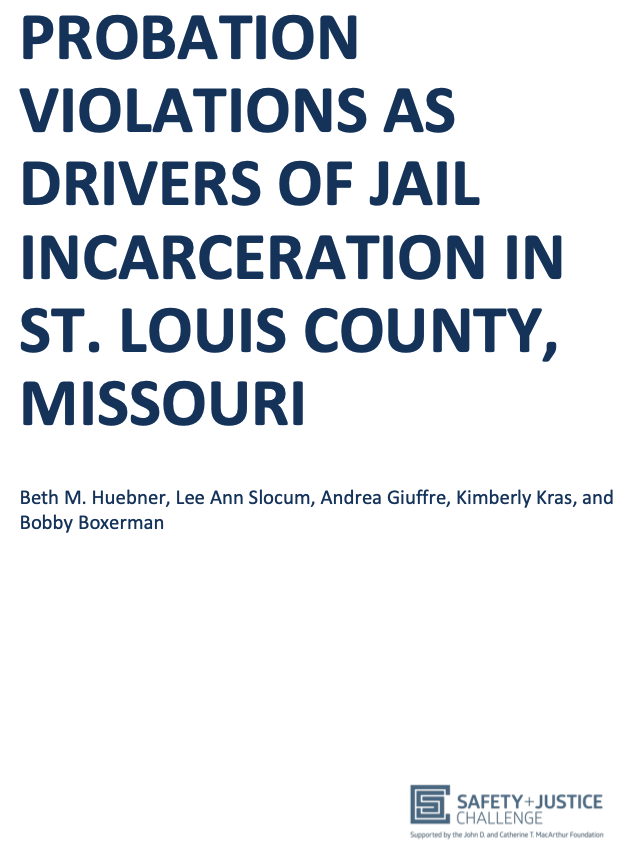Research Report
Frequent Jail Users Incarceration Trends Probation Racial and Ethnic Disparities January 12, 2023
Probation Violations as Drivers of Jail Incarceration in St. Louis County, Missouri
Many have argued that we are in the era of mass probation, as more people are under probation supervision than under any other correctional sanction. Although there have been declines in the national probation population over the past decade, one in 84 adult US residents is currently on probation. Nationwide, local jail populations have also grown—from 184,000 in 1980 to 741,900 in 2019. The increased use of probation inflates the population at risk of subsequent confinement in jail or prison. Individuals who violate their probation, in some states, are detained in jail and await a hearing. Despite the growth in probation revocations and the increased use of jail stays as a response to technical violations, however, there is little evidence to suggest that short-term stays of incarceration reduce recidivism.
Adding to the growing rate of probation is the problem of racial disparity in incarceration. People of color are disproportionately represented among the probation population. In 2018, Black people represented 30% of the US probation population, twice their proportion in the national population. Further, almost half of all young Black men (24 to 32 years old) with no high school degree reported having been on probation at some point. Black individuals, particularly young men, are also more likely than White individuals to struggle on probation and to be given multiple conditions of supervision. Although there is evidence that Black individuals are more likely to have their probation revoked, less is known about how revocation to jail influences trajectories and outcomes for this group.
Jail stays also have deleterious effects in the short and long term. For example, Harding and colleagues found that short terms of jail incarceration resulting from technical violations suppressed the earnings of individuals by about 13% in the nine months after release from custody. The churn of multiple jail stays, even if short in length, also causes strain and instability among families, leaving them feeling hopeless under the constant eye of supervision. Yet, the unique needs of jail populations overall, and those of individuals who violate probation terms, are rarely considered in correctional reforms.
